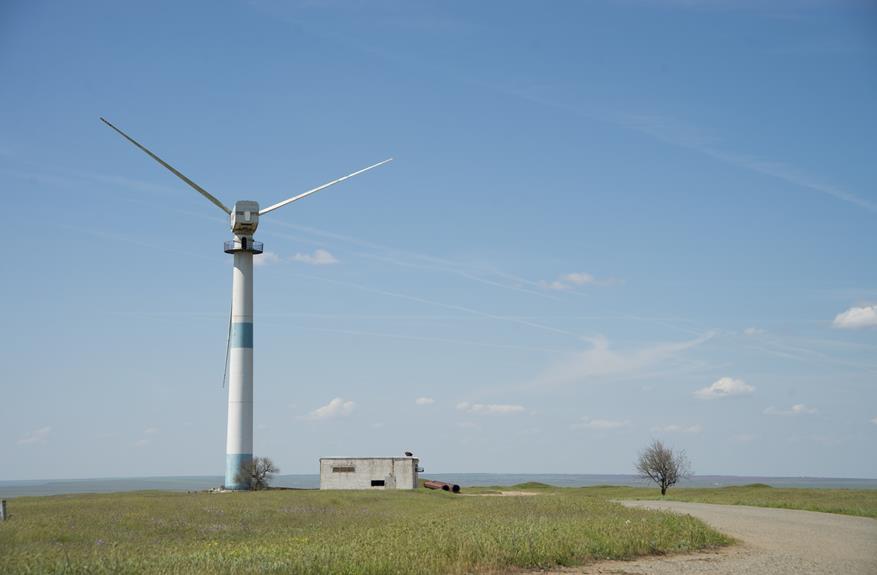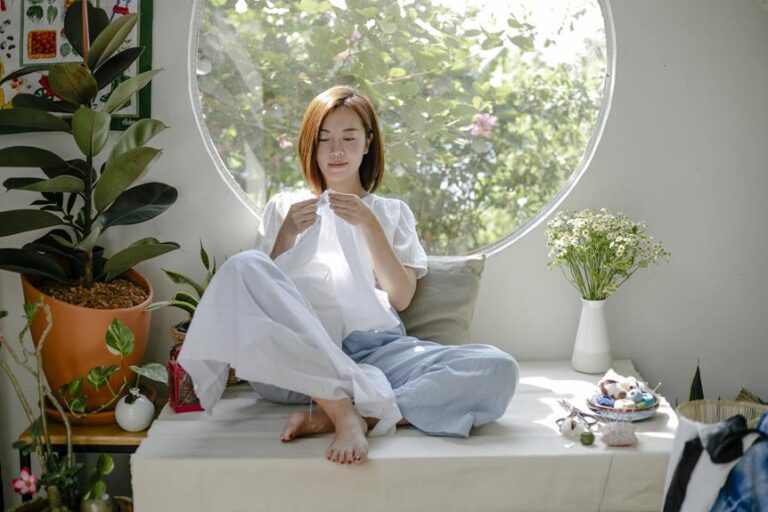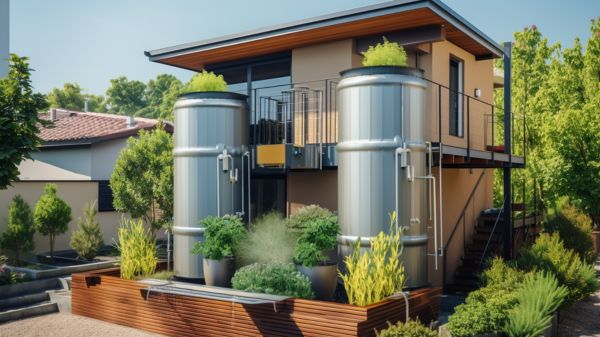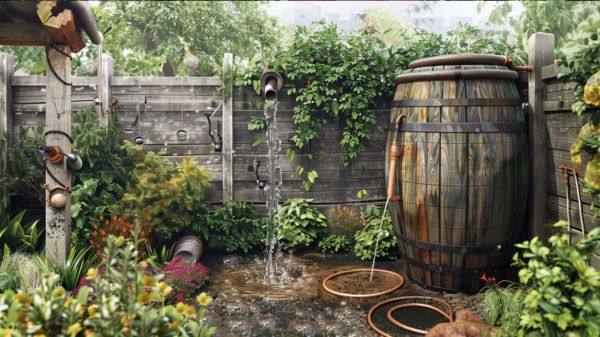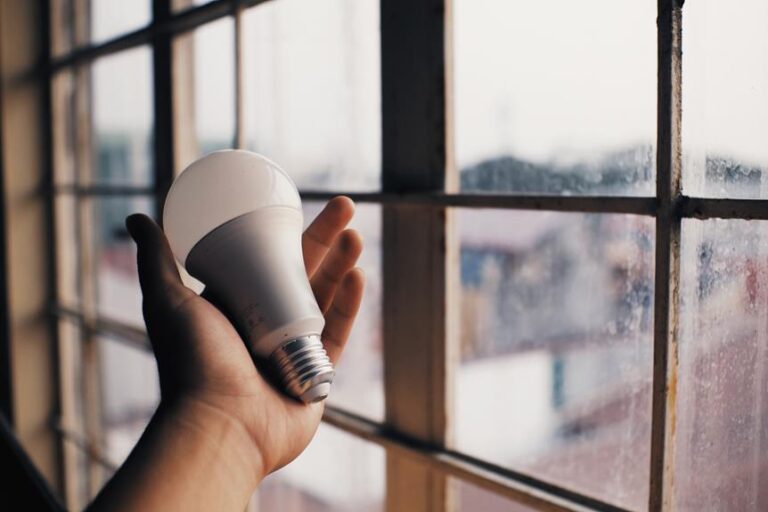13 Innovative Green Building Designs for Energy Efficiency
Did you know that buildings are responsible for 39% of global energy-related carbon dioxide emissions? If we want to combat climate change, we need innovative green building designs that prioritize energy efficiency.
In this article, we will explore 13 cutting-edge solutions that can revolutionize the way we construct and operate buildings. From passive solar design to smart building automation, these techniques and technologies are paving the way for a more sustainable and environmentally friendly future.
Passive Solar Design
If you want to maximize energy efficiency in your green building, incorporate passive solar design strategies.
Passive solar design utilizes the natural energy from the sun to heat and cool your building, reducing the need for artificial heating and cooling systems. This sustainable architecture approach takes advantage of the building’s location, orientation, and materials to passively capture and store solar energy.
By strategically placing windows, using thermal mass materials, and implementing effective insulation, you can harness the power of solar heating. South-facing windows allow for maximum sunlight penetration during winter months, while overhangs and shading devices prevent excessive heat gain during the summer.
The use of sustainable materials, such as reclaimed wood and recycled insulation, further enhances the energy efficiency of your green building. Incorporating passive solar design not only reduces your building’s carbon footprint but also saves you money on energy bills.
Green Roofs
One key element to consider for an innovative green building design is to incorporate a single-layer green roof. Green roofs are becoming increasingly popular due to their numerous environmental benefits.
Here are three reasons why green roofs are a great addition to any energy-efficient building:
- Improved energy efficiency: Green roofs provide natural insulation, reducing the need for artificial heating and cooling. This can lead to significant energy savings and lower utility bills.
- Rainwater harvesting: Green roofs absorb rainwater, preventing it from overwhelming storm-water systems. This harvested water can be used for irrigation or other non-potable purposes, conserving freshwater resources.
- Enhanced biodiversity: Green roofs create a habitat for birds, insects, and plants in urban areas, promoting biodiversity and creating a more sustainable ecosystem.
Biophilic Design
When it comes to designing energy-efficient buildings, incorporating elements of nature can have a significant impact. Biophilic design, which draws inspiration from the natural world, is a promising approach that can enhance both the aesthetics and functionality of a building.
Nature-Inspired Building Designs
To achieve energy efficiency in green building designs, incorporate nature-inspired elements such as biophilic design. Biophilic design is a concept that draws inspiration from nature to create buildings that promote health, well-being, and productivity.
By incorporating natural elements into the design, such as indoor plants, natural light, and views of nature, biophilic design can improve indoor air quality, reduce stress levels, and increase the overall comfort of occupants.
Additionally, biomimicry architecture, which seeks to emulate nature’s efficiency and sustainability in building design, can further enhance energy efficiency.
To ensure the effectiveness of nature-inspired building designs, it’s important to consider green building certifications, such as LEED (Leadership in Energy and Environmental Design), which provide guidelines and standards for sustainable construction practices.
Benefits of Biophilic Design
Incorporating biophilic design into your green building can provide numerous benefits, enhancing the overall well-being and productivity of occupants.
Biophilic design is the practice of incorporating nature into the built environment, and it has gained popularity in recent years due to its positive impact on human health and well-being.
In urban spaces, where greenery may be limited, biophilic design offers a solution by bringing nature indoors. By incorporating elements such as natural light, plants, and water features, biophilic design creates a connection between occupants and the natural world, reducing stress and improving cognitive function.
In office buildings, biophilic design has been shown to increase productivity, creativity, and job satisfaction. Furthermore, studies have found that exposure to nature within the workplace can lead to improved air quality and reduced sick leave.
Net-Zero Energy Buildings
To achieve energy efficiency, consider implementing net-zero energy buildings. These buildings are designed to produce as much energy as they consume, resulting in a net-zero energy usage.
Here are some key features and benefits of net-zero energy buildings:
- Energy Generation: Net-zero energy buildings incorporate renewable energy sources such as solar panels or wind turbines to generate electricity on-site.
- Energy Conservation: These buildings are highly insulated and use energy-efficient appliances and systems to minimize energy consumption.
- Net Zero Building Certification: Building owners can pursue net zero building certification to validate their energy performance and showcase their commitment to sustainability.
Geothermal Heating and Cooling
You can further enhance the energy efficiency of your green building design by utilizing geothermal heating and cooling systems, which integrate seamlessly with net-zero energy buildings.
Geothermal energy efficiency is achieved by harnessing the constant temperature of the earth to heat and cool your building. Geothermal heating technology utilizes pipes that are buried underground to circulate a mixture of water and antifreeze, which absorbs and transfers the earth’s heat to your building during the winter months. In the summer, the system reverses, extracting heat from the building and transferring it back into the earth.
This process significantly reduces the need for traditional heating and cooling systems, resulting in lower energy consumption and reduced carbon emissions. Geothermal heating and cooling is a cost-effective and sustainable solution for achieving optimal energy efficiency in green building designs.
Solar Photovoltaic Systems
Are you looking for cost-effective ways to incorporate renewable energy into your building design?
Solar photovoltaic systems are an innovative solution that can help you achieve just that. By harnessing the power of the sun, these systems allow you to generate electricity and reduce your reliance on traditional energy sources.
Not only will you save money on your energy bills, but you’ll also contribute to a reduced carbon footprint, making your building more sustainable and environmentally friendly.
Cost-Effective Solar Panels
When considering cost-effective solar panels for energy efficiency in green building designs, it’s important to explore the benefits of incorporating solar photovoltaic systems. These systems offer affordable installation options and high solar panel efficiency, making them an attractive choice for sustainable construction projects.
Here are three key advantages of cost-effective solar panels:
- Lower installation costs: Solar photovoltaic systems have become more affordable in recent years, with advancements in technology and increased competition in the market. This means that incorporating solar panels in your green building design is now a cost-effective option, allowing you to save money in the long run on energy bills.
- Increased energy efficiency: Solar panels harness the power of the sun to generate electricity, reducing your dependence on traditional energy sources. With high solar panel efficiency, you can maximize the amount of energy produced, further reducing your carbon footprint and saving on energy costs.
- Long-term savings: By investing in cost-effective solar panels, you can enjoy long-term savings on energy bills. Over time, the energy generated by solar photovoltaic systems can offset your electricity costs, providing a return on investment and contributing to a more sustainable future.
Incorporating cost-effective solar panels into your green building design is a practical and environmentally-friendly solution for achieving energy efficiency and reducing costs.
Renewable Energy Source
Incorporating cost-effective solar panels into your green building design offers a renewable energy source with high efficiency and long-term savings. Solar photovoltaic (PV) systems are a key component of renewable energy integration in sustainable buildings. These innovative solar technologies harness the power of the sun to generate electricity, reducing reliance on fossil fuels and decreasing carbon emissions.
Solar PV systems consist of solar panels that convert sunlight into usable electricity through the photovoltaic effect. By installing these systems on rooftops or facades, you can maximize the exposure to sunlight and optimize energy production.
Additionally, excess energy generated by the solar PV system can be stored in batteries or fed back into the grid, further reducing reliance on non-renewable energy sources.
Reduced Carbon Footprint
Maximize your energy efficiency and reduce your carbon footprint with the integration of solar photovoltaic systems. By harnessing the power of the sun, you can significantly decrease your dependence on fossil fuels and contribute to a cleaner, greener environment.
Here are three ways in which solar photovoltaic systems can help you achieve a reduced carbon footprint:
- Carbon offsetting: Solar panels generate clean energy, which means that by using them, you’re offsetting the carbon emissions that would have been produced by traditional energy sources.
- Sustainable transportation: Solar-powered electric vehicle charging stations can be integrated into your building design, promoting the use of sustainable transportation options and reducing the carbon emissions associated with conventional vehicles.
- Energy self-sufficiency: With solar panels, you can generate your own electricity, reducing the need for energy sourced from fossil fuels and further minimizing your carbon footprint.
Rainwater Harvesting
To maximize energy efficiency in your green building design, consider incorporating rainwater harvesting techniques.
Rainwater harvesting is the practice of collecting and storing rainwater for future use. Not only does it help conserve water resources, but it also reduces the strain on municipal water supplies.
By implementing rainwater harvesting systems, you can reduce your building’s water consumption and lower your utility costs. Rainwater can be collected from rooftops and directed into storage tanks or underground cisterns. This stored water can then be used for various purposes, such as irrigation, toilet flushing, and even laundry.
Incorporating rainwater harvesting into your green building design can also contribute towards achieving green building certification, as it demonstrates your commitment to sustainability and resource conservation.
Energy-Efficient Lighting
Consider installing energy-efficient lighting to further enhance the energy efficiency of your green building design. Energy-efficient bulbs and lighting controls can significantly reduce energy consumption and lower your building’s carbon footprint. Here are three ideas to help you implement energy-efficient lighting solutions:
- Use energy-efficient bulbs: Replace traditional incandescent bulbs with energy-efficient options such as LED or CFL bulbs. These bulbs consume less energy and have a longer lifespan, leading to lower energy costs and reduced maintenance.
- Implement lighting controls: Install occupancy sensors, timers, and dimmers to control lighting usage based on occupancy or time of day. These controls ensure that lights are only used when needed, saving energy and reducing unnecessary lighting.
- Optimize natural lighting: Maximize the use of natural daylight through strategic window placement and skylights. This reduces the need for artificial lighting during the day, saving energy and providing a more comfortable and productive environment.
Natural Ventilation Systems
When it comes to green building designs, incorporating natural ventilation systems can provide numerous benefits.
Not only does natural ventilation reduce the need for mechanical cooling, but it also improves indoor air quality and occupant comfort.
When designing for natural ventilation, factors such as building orientation, window placement, and airflow patterns need to be considered to maximize its effectiveness.
Benefits of Natural Ventilation
Maximize the energy efficiency of your green building design with the numerous benefits that natural ventilation systems offer. Natural ventilation is a design principle that allows fresh air to circulate through a building without the need for mechanical systems. This not only reduces energy consumption but also improves indoor air quality.
The benefits of natural ventilation systems include:
- Energy efficiency: By harnessing natural air movements, you can reduce the need for artificial cooling and ventilation systems, leading to significant energy savings.
- Improved indoor air quality: Natural ventilation systems help to remove stale air, pollutants, and odors from the building, ensuring a healthier and more comfortable environment for occupants.
- Cost savings: With reduced reliance on mechanical ventilation systems, you can save on electricity bills and maintenance costs.
Design Considerations for Natural Ventilation
To optimize the energy efficiency of your green building design, prioritize the integration of natural ventilation systems. By utilizing energy-saving ventilation technologies, you can significantly reduce the energy consumption of your building while improving indoor air quality.
When considering natural ventilation, it’s essential to think about the building’s orientation and layout. Positioning windows and openings strategically can maximize the airflow and facilitate cross-ventilation. Additionally, incorporating features like operable windows, louvers, or vents can allow for better control over the airflow.
It’s also crucial to consider the climate of the location and design the building accordingly. By implementing these design considerations for natural ventilation, you can create a sustainable and energy-efficient building that promotes a healthy and comfortable indoor environment.
Case Studies of Successful Natural Ventilation Systems
By integrating natural ventilation systems, you can achieve successful and energy-efficient building designs. Case studies of successful implementation provide valuable insights into the benefits and strategies of natural ventilation systems. Here are three notable examples:
- The Bullitt Center in Seattle: This six-story office building utilizes operable windows, stack effect, and automated controls to maximize natural ventilation. It achieved a LEED Platinum certification and uses 90% less energy than a typical office building.
- The Edge in Amsterdam: This innovative office building incorporates a smart ventilation system that adjusts airflow based on occupancy, temperature, and CO2 levels. It achieved the highest BREEAM score ever awarded and generates more energy than it consumes.
- The Bahrain World Trade Center: This iconic skyscraper uses wind turbines integrated into its design to harness natural ventilation and generate renewable energy. It achieved the first-ever LEED Platinum certification for a high-rise building in the Middle East.
These case studies demonstrate the successful implementation of natural ventilation systems in diverse building types and climates, highlighting their effectiveness in reducing energy consumption and promoting a healthier indoor environment.
Smart Building Automation
You can achieve energy efficiency in innovative green building designs with the implementation of smart building automation.
Smart building controls and energy management systems are crucial components of these automation systems. By using smart building controls, you can optimize the performance of various building systems, such as lighting, heating, ventilation, and air conditioning (HVAC). These controls use advanced sensors and algorithms to monitor and adjust energy consumption based on occupancy, weather conditions, and other factors.
Energy management systems provide a centralized platform for monitoring and controlling energy usage in real-time. They can analyze data from various sources, identify energy-saving opportunities, and automatically make adjustments to optimize energy efficiency.
With smart building automation, you can significantly reduce energy waste and lower operational costs while improving occupant comfort and productivity.
Sustainable Materials and Construction
When designing green buildings for energy efficiency, it’s important to consistently prioritize the use of sustainable materials and construction methods. By implementing sustainable design strategies and using green building materials, you can create a more environmentally friendly and energy-efficient structure.
Here are three key considerations for sustainable materials and construction:
- Utilize renewable resources: Incorporate materials that are derived from renewable sources, such as bamboo for flooring or reclaimed wood for structural elements. This reduces the reliance on finite resources and helps to preserve natural habitats.
- Opt for recycled materials: Choose materials that are made from recycled content, such as recycled steel or recycled glass. This reduces the demand for virgin materials and minimizes waste.
- Embrace energy-efficient construction methods: Use construction techniques that minimize energy consumption during the building process, such as prefabrication or modular construction. This reduces waste and improves overall energy efficiency.
Related Post: Designing Tomorrow: Great Innovations in a Sustainable Home.
Daylighting Strategies
To maximize energy efficiency and create a well-lit environment, incorporating effective daylighting strategies is essential in green building designs. Daylighting techniques involve optimizing natural light to reduce the need for artificial lighting, which in turn reduces energy consumption.
One popular technique is the use of skylights or roof windows. These allow natural light to penetrate deep into the building, reducing the reliance on artificial lighting during the day.
Another strategy is the use of light shelves or light tubes. Light shelves are horizontal surfaces that bounce natural light deeper into the building, while light tubes capture sunlight from the roof and distribute it throughout the interior.
Additionally, building orientation and the placement of windows and shading devices can also enhance daylighting, ensuring maximum utilization of natural light while minimizing heat gain.
Water Conservation Techniques
Implementing water-saving strategies is crucial in green building designs for enhancing water conservation and reducing overall water usage. Here are some effective techniques to consider:
- Greywater recycling: By treating and reusing water from sinks, showers, and laundry, you can significantly reduce the demand for fresh water. Installing a greywater recycling system allows you to repurpose this water for irrigation or toilet flushing, reducing the strain on local water resources.
- Drought-resistant landscaping: Incorporating native plants and low-water-use landscaping can help minimize outdoor water consumption. These plants are adapted to the local climate and require less irrigation, reducing the need for excessive watering during dry spells. Additionally, using permeable pavement and mulching can help retain moisture in the soil and minimize water runoff.
- Efficient fixtures and appliances: Installing water-efficient fixtures such as low-flow toilets, faucets, and showerheads can significantly reduce water usage. Additionally, using energy-efficient appliances like dishwashers and washing machines can further enhance water conservation by reducing the amount of water required for each cycle.
Conclusion
These 13 innovative green building designs offer practical and efficient solutions for a sustainable future. By harnessing the power of passive solar design, utilizing green roofs, and implementing biophilic design principles, buildings can maximize energy efficiency and minimize their carbon footprint.
With the integration of smart building automation and net-zero energy technologies, these designs are paving the way towards a more environmentally conscious and economically viable future. By adopting these strategies, we can create a world where buildings aren’t only functional but also contribute positively to the planet.
